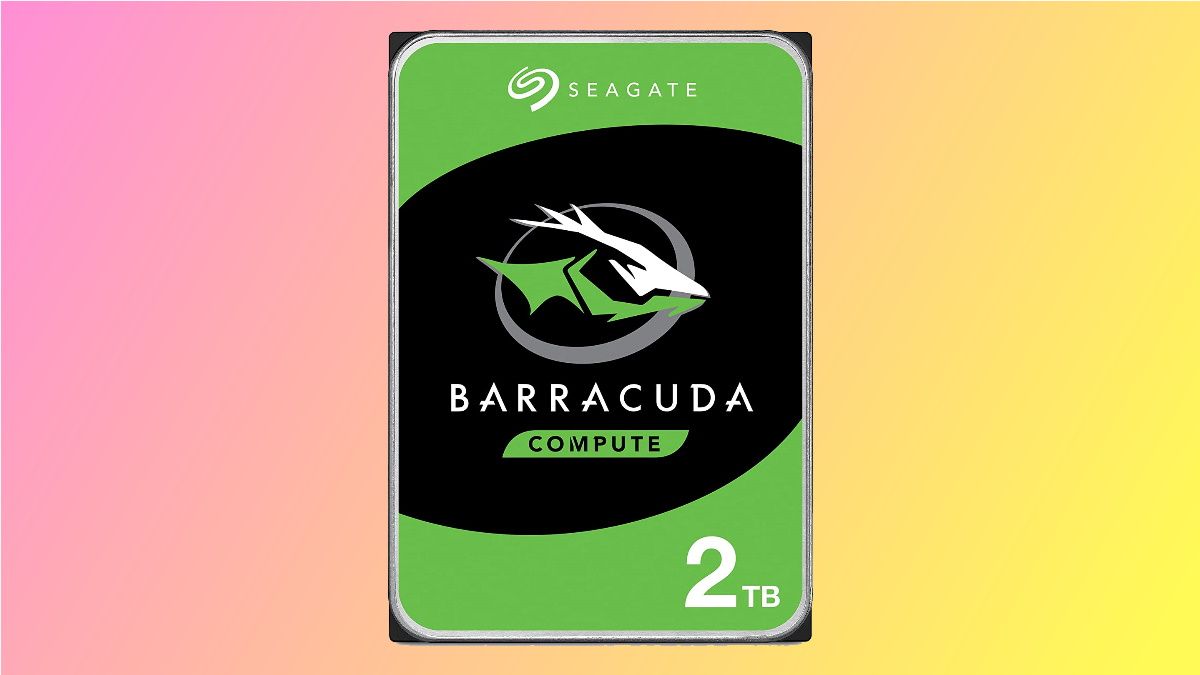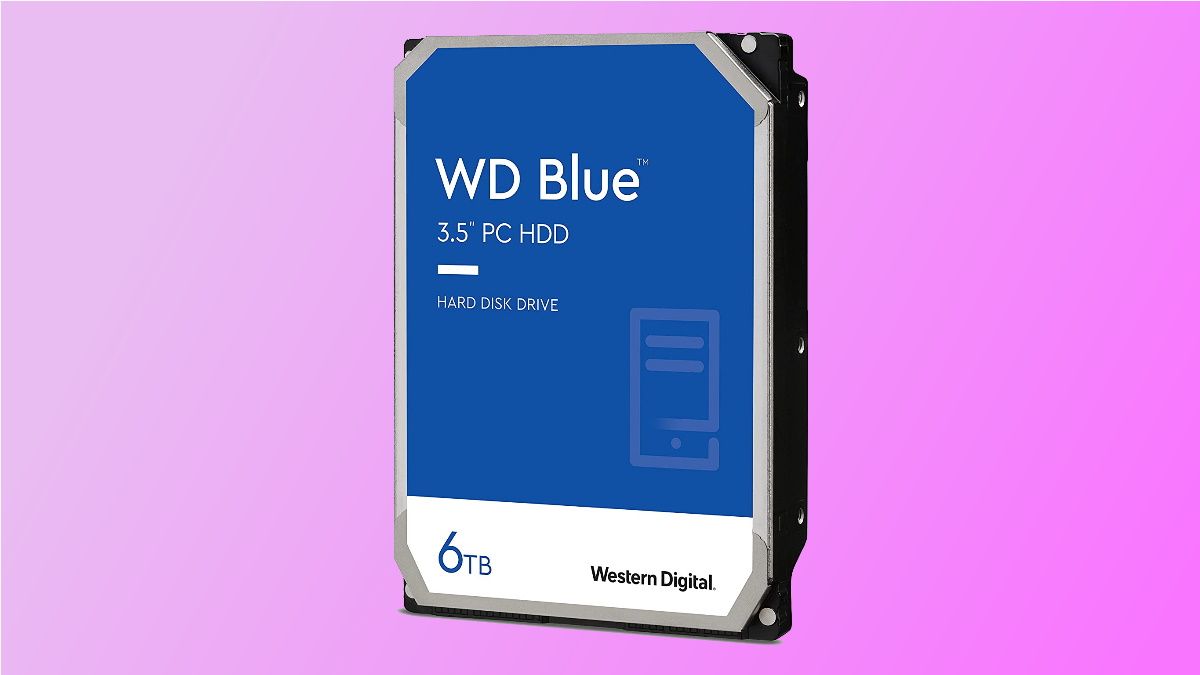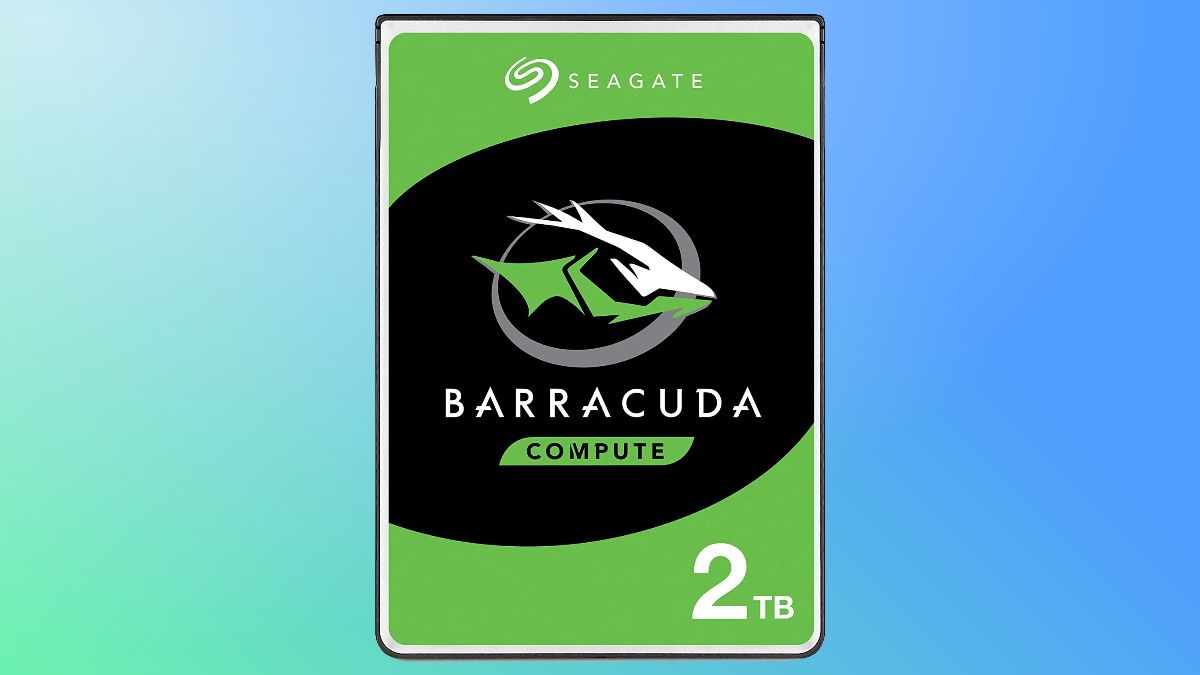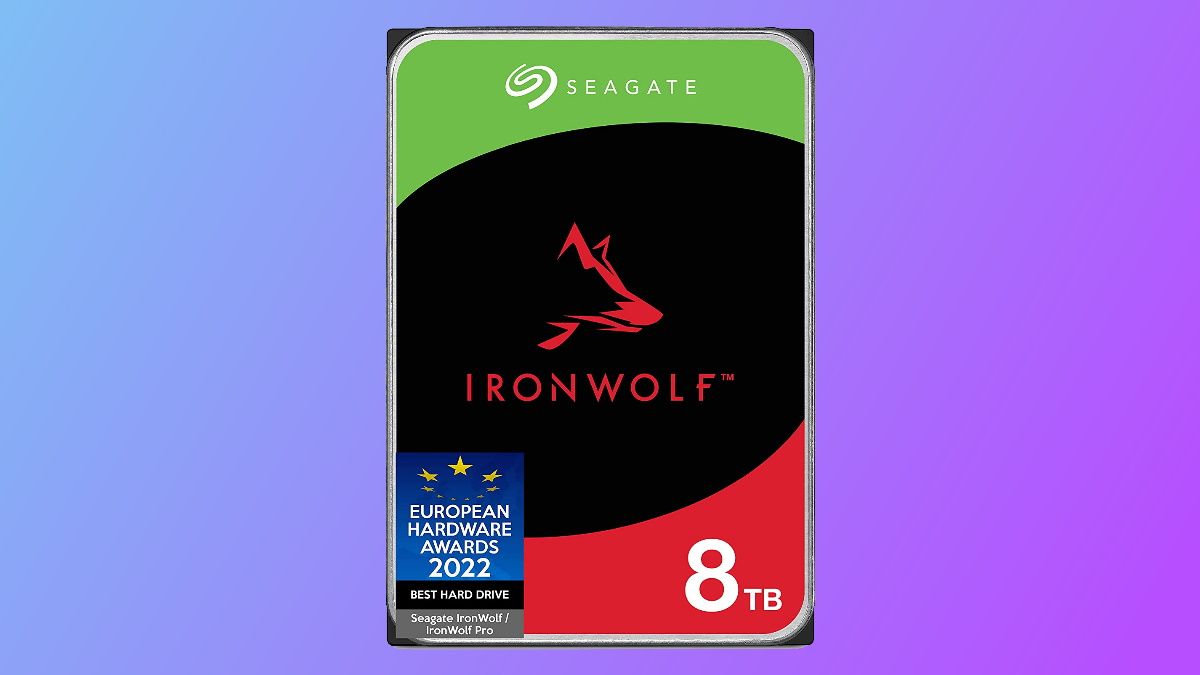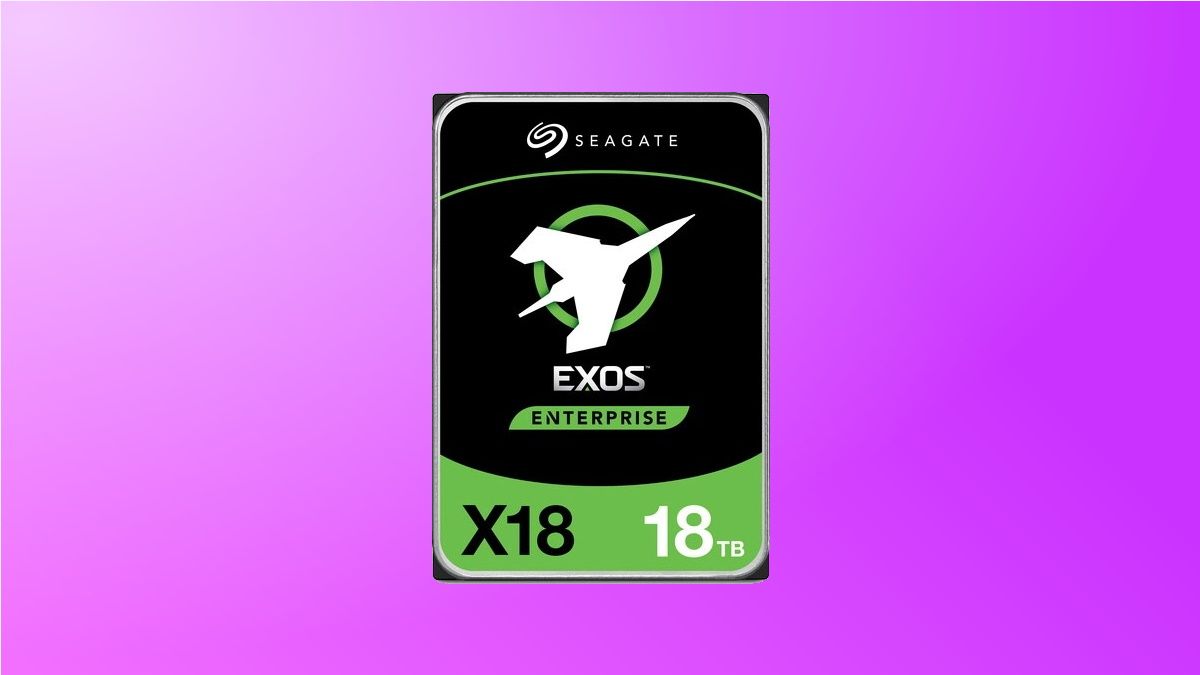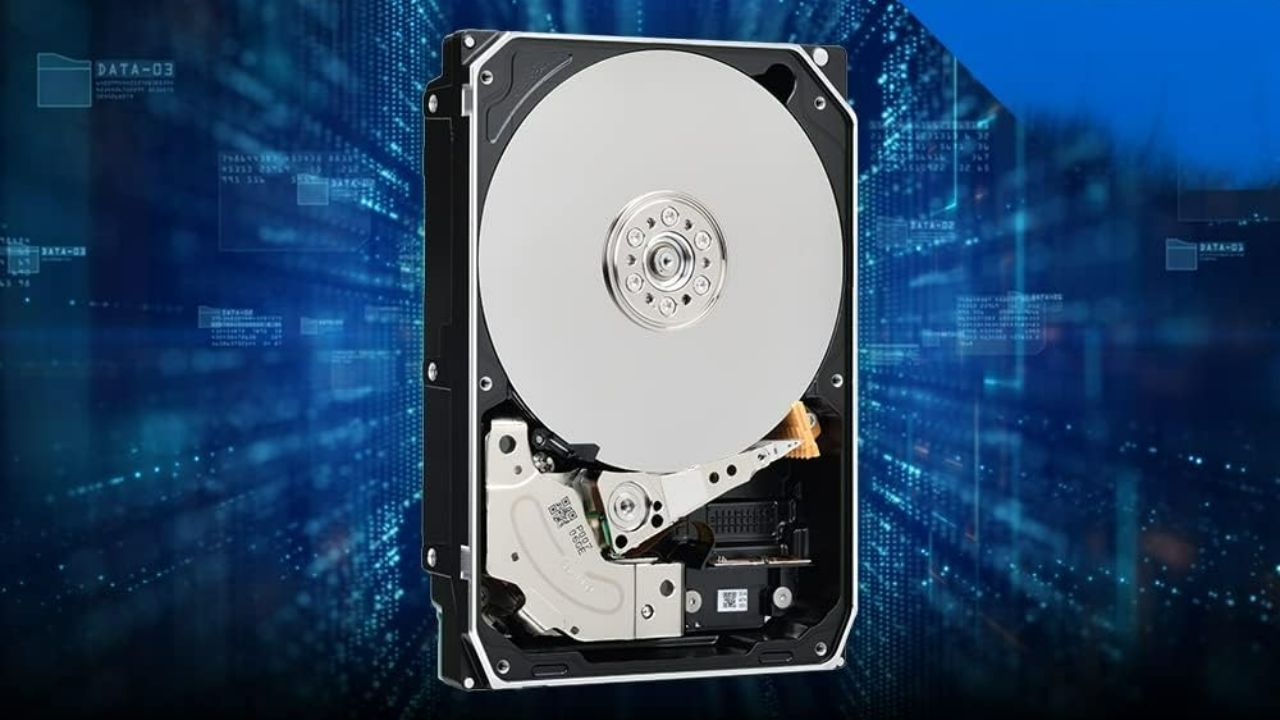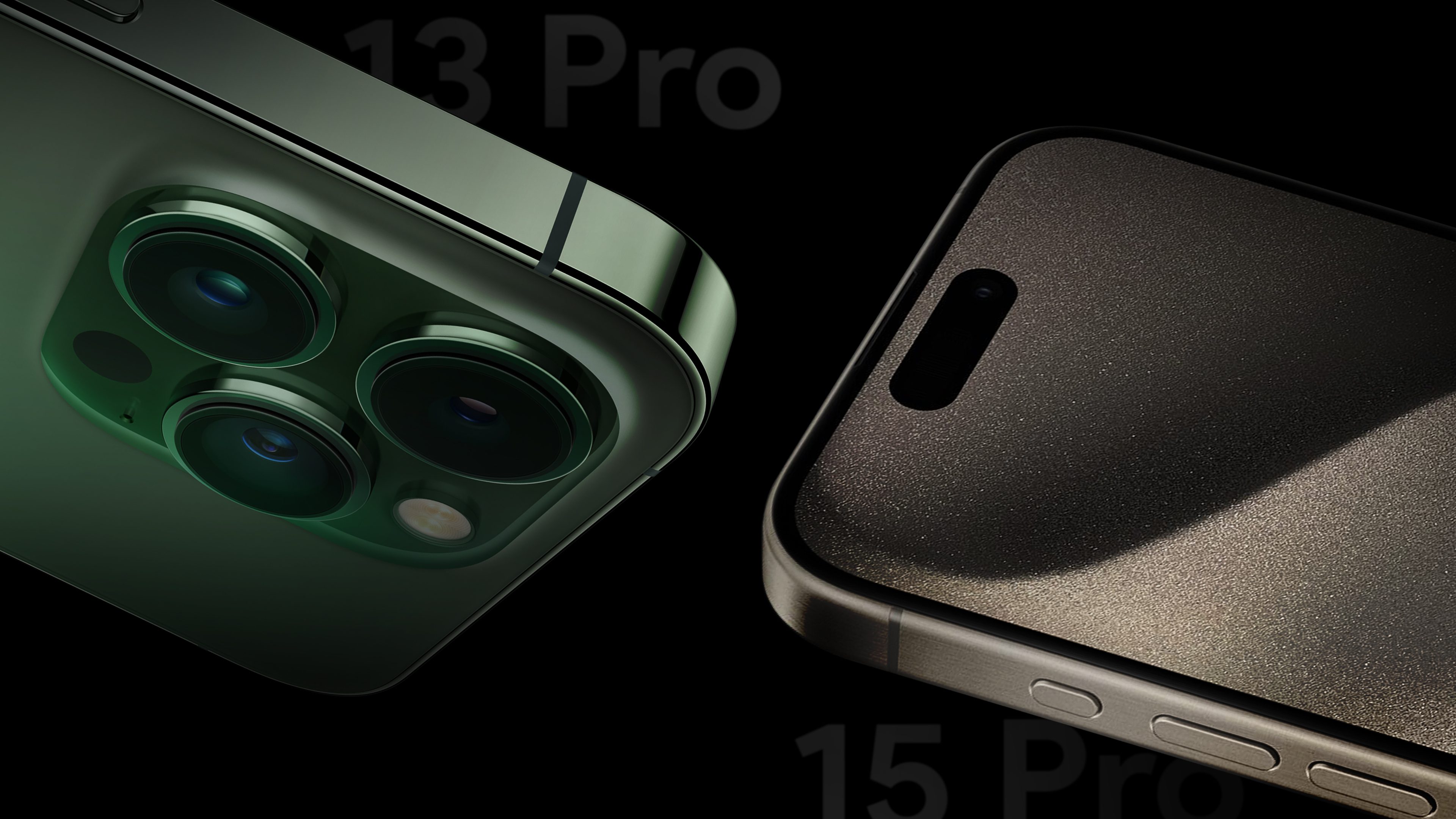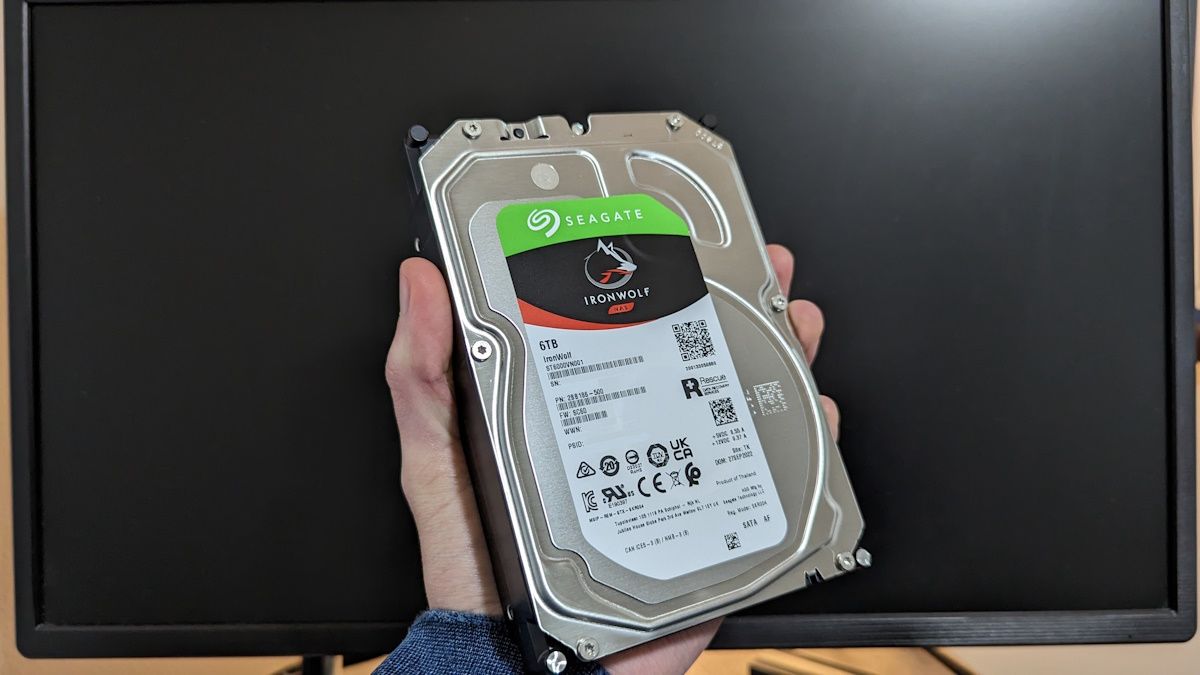
While solid state drives are constantly getting cheaper, those in the low price range still haven’t broken the four-terabyte barrier. More importantly, if you don’t need high-speed SSD storage, such as for AAA gaming or editing, hard disc drives are a cheaper option that will serve you just as well.
UPDATE: 01/19/2024
We’ve reviewed our recommendations and are confident these are still the best internal HDDs you can buy.
What To Look For in an Internal Hard Drive in 2024
Speed tends to be on everyone’s minds these days, and when you’re picking an internal hard drive, you’re primarily going to run into two speeds, which are denoted in Rotations Per Minute (RPMs): either 7,200 or 5,400 RPMs. There are speeds between the two, and sometimes even higher than 7,200, but it seems these are the two standards the industry has set for faster and slower hard drives.
So, if you’re doing a higher-intensity task that has a lot of reading and writing, such as gaming or using editing software, then you want to go for the higher RPM speeds. On the other hand, if you’re using it for storage or day-to-day use, 5,400 RPMs is more than enough and is usually cheaper to boot.
Once you know what speeds you want, you then need to think about reliability and how much you’re going to use the hard drive. For example, if you want a hard drive to store surveillance footage, then you need a hard drive rated for 24/7 uptime usage, usually either Network Attached Storage (NAS) or enterprise-grade hard drives.
Speaking of uptime rating, you’ll also want to keep an eye out for warranty length. Industry minimums sit at around 3 years, with most professionals and people in the tech space expecting 5 years. Unfortunately, most of these warranties only cover the physical drive itself, so always back up your data.
Finally, and something ironically at the bottom of the list, you need to think about how much storage you ultimately need or think you will use. Generally speaking, the larger the storage capacity you buy, the cheaper each gigabyte will be. That being said, there’s no point buying a 12TB hard drive if you only really need 6TB. While it’s important to have some wiggle room in terms of storage space, at some point, it becomes excessive.
|
How Did We Research |
||
|
Models Evaluated |
Hours Researched |
Reviews Analyzed |
|
30 |
15 |
50 |
How-To Geek’s product recommendations come from the same team of experts that have helped people fix their gadgets over one billion times. We only recommend the best products based on our research and expertise. We never accept payment to endorse or review a product. Read More »
|
Pros |
Cons |
|---|---|
|
✓ Fast speeds |
✗ Small Cache |
|
✓ Great pricing |
✗ Price per gigabyte for HDD Pro models increases, rather than decreases |
|
✓ Capacity up to 14TB |
Picking the top HDD in a sea of excellent hard drives can be very hard, especially given that most research and development are going into increasing size rather than performance. Even so, the Seagate BarraCuda 2TB is a great HDD because it does a good job of balancing price with performance.
At 7,200rpm, the BarraCuda is already hitting the top of the speed and performance band for HDDs, which means you can expect around 160MB/s of sequential write speeds. As for the price of the 2TB model, going for around $50 or so depending on the retailer comes out to under three cents per gigabyte, which is impressive for the performance you’re getting.
The only real downsides are the slightly smaller cache of 256MB and that it runs a bit loud, which can be a problem if your desktop is next to you in a quiet environment.
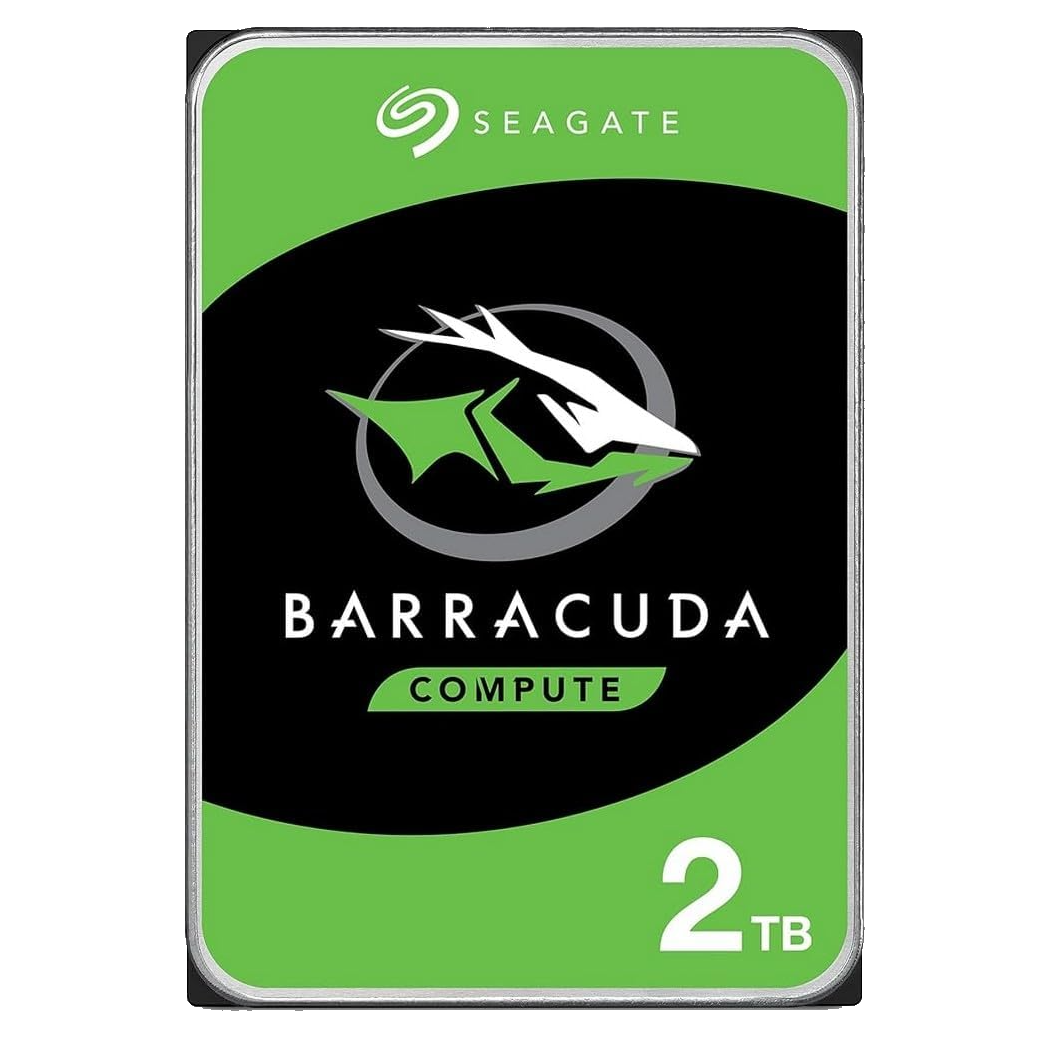
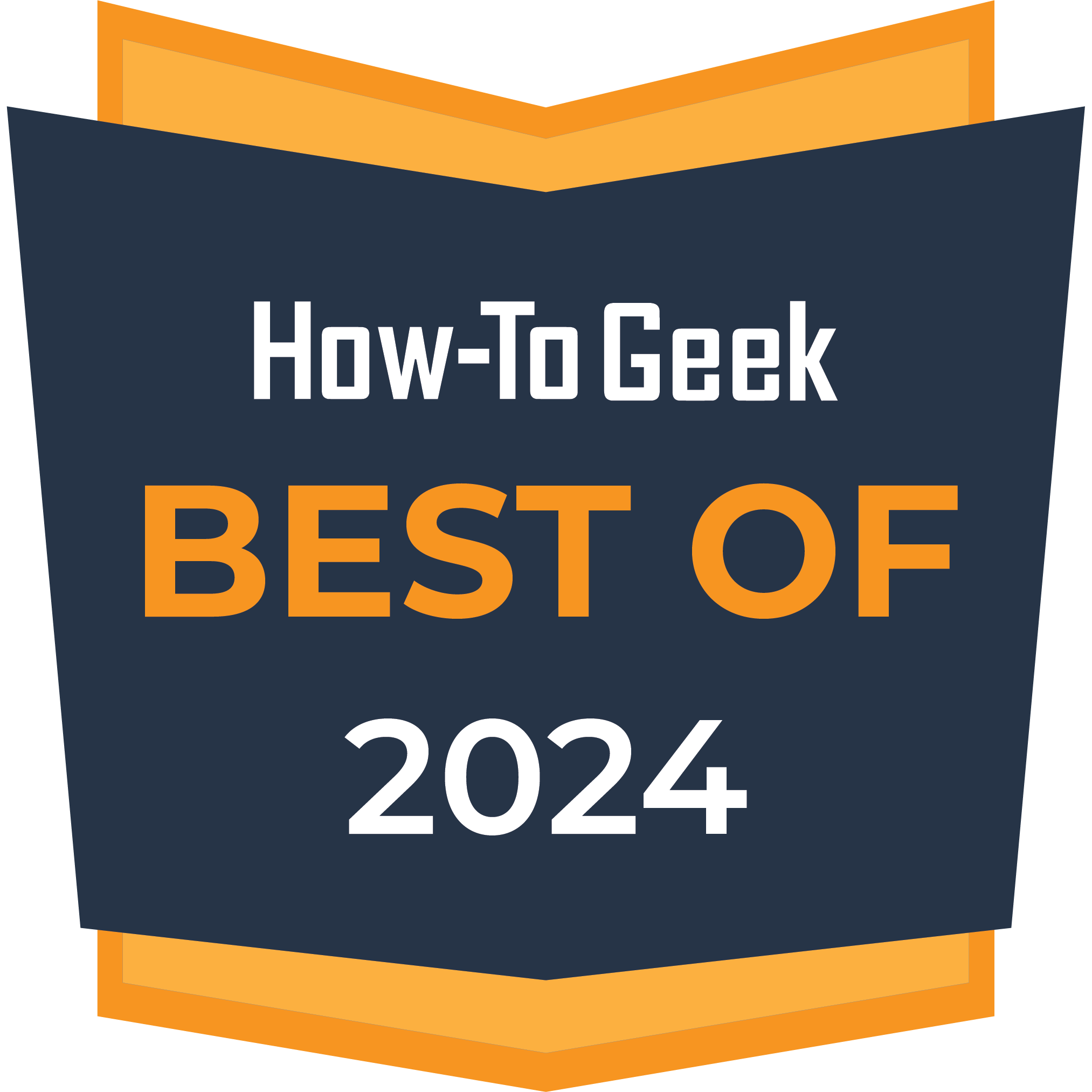
Seagate BarraCuda 2TB
Best Internal HDD Overall
If you want a performance HDD with a budget price, the Seagate BarraCuda 2TB slots into that spot just perfectly.
|
Pros |
Cons |
|---|---|
|
✓ Excellent price per GB |
✗ Higher cost and lower RPM with larger sizes |
|
✓ Relatively good speeds |
✗ Short warranty |
|
✓ Lots of size options |
The Western Digital WD Blue is the direct competitor of the Seagate BarraCuda, and while the BarraCuda is great for budget performance, the WD Blue is unbeatable for the price per gigabyte. With the 6TB version going for around $110, depending on the retailer, that comes out to $0.018 per gigabyte, around 40% cheaper than the BarraCuda.
It comes at a different cost, though, because it runs slower at 5,400 RPM, so you’d expect around 130MB/s read and write speeds. While that’s significantly slower than the BarraCuda, it’s not that bad, especially if you use it for lower-speed tasks, such as simple storage. You don’t want to run a game or editing software off of it, but otherwise, it should be fine for most use cases.
We’ll also point out that you can get a WD Blue that runs at 7,200 RPM at the 1TB or 2TB size, but it costs around the same as the BarraCuda. The cost per gigabyte decreases as the size of the HDD increases, so if you’re grabbing a WD Blue, go for the larger sizes.
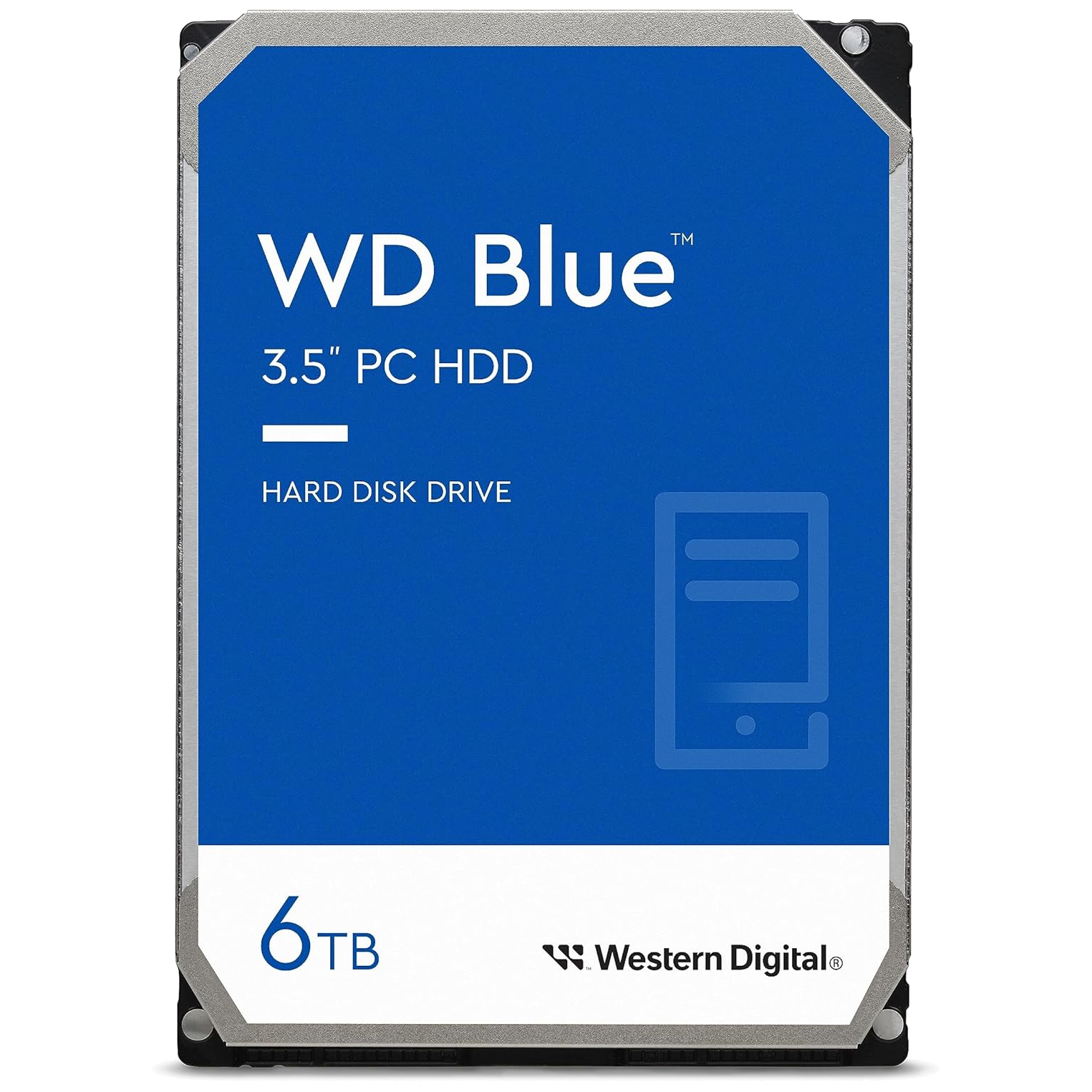

Western Digital 6TB WD Blue
Best Budget Internal HDD
It’s hard to beat the price per gigabyte of the WD Blue at larger storage sizes, although that does come at the cost of slower RPMs.
|
Pros |
Cons |
|---|---|
|
✓ Best balance between price and performance |
✗ Only available at 5400 RPM |
|
✓ 128MB cache |
✗ Maximum size is 2TB |
The 2.5-inch version of our best overall recommendation, the Seagate BarraCude 2TB is a great internal HDD for laptops. With good reliability and a chunky maximum size of 2TBs, it’s a good option if you want to spend less than $100.
That being said, it does come with the downside of slower RPM speeds, so it’s not ideal for gaming or editing. At 5,200, it’s not competitive with SSD options that are only slightly more expensive, so while grabbing an internal HDD for your laptop is an option, we’d strongly urge going with either a hybrid drive or solid-state drive, as mentioned below.
For higher-intensity use, there’s the Seagate FireCuda 2TB which is a Solid State Hybrid Drive—a drive that mixes parts of both HDDs and SSDs. Unfortunately, better performance also means you’ll be spending nearly three times the price, which isn’t ideal if you’re on a budget.
While it’s about $20 more expensive than the Seagate FireCuda, we’d recommend getting the Samsung 870 EVO 2TB instead. It’s one of the best SSDs on the market, especially for high-speed usage, and it has the same storage space as the FireCuda. On the other hand, if you’re willing to go with a little bit less storage space, or the laptop can take two 2.5-inch drives, then these Kingston 960GB and Crucial MX500 1TB SSDs go for roughly $65-$75,


Seagate BarraCuda
Best Internal HDD for Laptops
It’s not easy to find good laptop HDDs that don’t cost an arm and a leg, but the Seagate BarraCuda 2TB manages to give you relatively good performance at a budget price.
|
Pros |
Cons |
|---|---|
|
✓ Better suited for RAID and NAS use |
✗ Can be a bit pricey compared to non-NAS HDDs |
|
✓ Reliable and with a long warranty |
While the world steadily moves towards streaming as the main way to consume content, Network Attached Storage, or NAS, can’t be completely ignored, especially for important files or those who want to keep a backup of their movies, music, and other media. Also, for those who torrent public archives, it’s important to have a drive that can keep up with constant 24/7 usage without failing.
To that end, the Seagate IronWolf NAS hard drives are some of the best-in-class for NAS usage, and the 8TB version sits in the best spot between size and cost. Able to withstand that constant use at 7,200 RPMs, the premium per gigabyte paid compared to a non-NAS HDD is worth it when it comes to longevity.
Another thing to keep in mind is that the smaller sizes start missing out on features; for example, anything below 8TBs spins at 5,900 RPM or slower. So if you’re planning to go for the IronWolf Pro NAS, stick to the larger sizes of 8TBs and above.
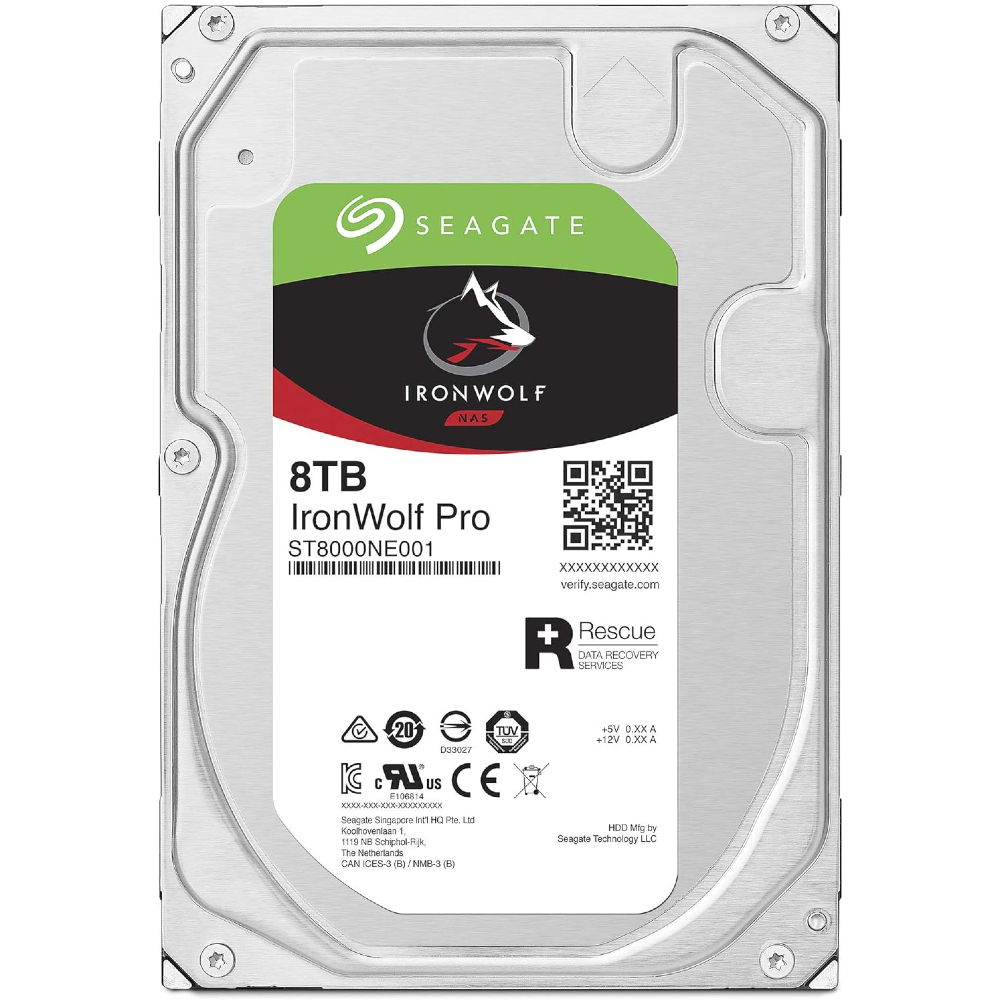

Seagate IronWolf Pro 8TB NAS
Best Internal HDD for NAS
$200 $230 Save $30
While it may cost a little bit more, the ability to run constantly at high speeds, and the NAS support through IronWolf Health Management, makes the IronWolf Pro one of the best HDDs for NAS usage.
|
Pros |
Cons |
|---|---|
|
✓ 5-year warranty |
✗ Is a bit pricey |
|
✓ Comes with up to 20TB of storage |
✗ Isn’t well-suited for NAS use |
|
✓ 550TB a year workload |
If you aren’t interested in 24/7 operation and just need as much storage space as you can get for something like ripping a whole collection’s worth of Blu-Rays, it’s hard to beat the Seagate Exos 18TB HDD. Interestingly enough, there’s also a 20TB version if you want that little bit of extra space, but it tends to be hard to find, and even then, it’s out-priced by the 18TB version.
In terms of performance, there are two options you can go for a SATA III connection which lets us go up to 6Gbps, or a SAS-3 connector which lets you go up to 12GBps. Unfortunately, the SAS-3 connector type isn’t common and hard to come by, so if you aren’t willing to wait or dig deep, you’re likely going with the SATA III 7,200 RPM version, which still nets you a respectable read/write speed.
It also has a total workload of 550TB a year, which is pretty good as far as workload limits go, and you won’t likely hit that if you’re not a power user. Luckily, it has a 5-year warranty that will come in handy and is what we’d expect at this price range. There’s also an impressive 2.5 million hour Mean Time Before Failure (MTBF).


Seagate 18TB Exos
Best High Capacity Internal HDD
It’s not easy to find HDDs that come in higher capacities, but the Seagate 18TB Exonos manages to provide you with an enterprise-level of quality, while also not being that expensive all things considered.
The Toshiba X300 Pro on a stylized blue background.
|
Pros |
Cons |
|
7,200 RPM |
Only 300TB/year workload rate |
|
512MB cache |
Expensive at higher capacities |
|
Available in 4TB to 20TB |
As long as you pick up a drive that spins at 7,200 RPM, you’re likely to have a hard drive that offers good speed. But what makes the Toshiba X300 Pro compelling is its combination of pricing and performance.
Not only does the X300 Pro spin at 7,200 RPM, but it boasts a 512MB cache in models beyond 10 TB. That sizable cache helps it move data even faster — giving you remarkable performance not found with many other products. The drive is offered in formats up to 20 TB, but the 14 TB model should be adequate for most users. It’s also frequently discounted for less than $300, making it a great value.
Coupled with a generous five-year warranty, a Mean Time to Failure (MTTF) of 1 million hours, and a SATA 6 Gbit/s interface, it’s a blistering fast drive that comes with plenty of additional benefits. Of course, an SDD will produce much faster speeds, so consider cross-shopping with the best internal SSDs for alternatives.
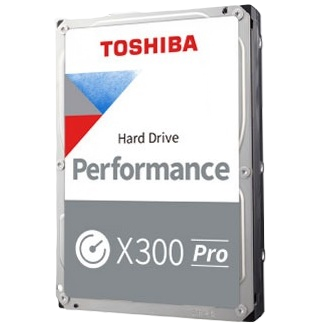

Toshiba X300 Pro
Fastest Internal HDD
$295 $440 Save $145
The Toshiba X300 Pro offers a sizable cache and spins at 7,200 RPM, making it a great option if you want an HDD that’s as fast as possible.

